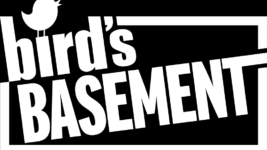News
24 May 2022
How Do You Create Engagement at Hybrid Events?

Subscribe to CX E-News
Any event organiser knows that engagement is one of the most important parts of the job. You can spend a fortune hiring a venue and speakers but, if you fail to get the audience to interact with the content, your return on that investment is probably going to be profoundly unimpressive.
The COVID-19 pandemic changed things up as events were forced to go fully digital. That certainly saved some money on venue hire, but it presented its own challenges. Now that COVID is starting to become a little less of a threat and events are starting to shift back towards being in-person affairs, event organisers are increasingly planning hybrid events. While combining the greater audiences of digital events with the greater audience interaction of physical conferences arguably gives you the best of both worlds, they inevitably also bring the worst of each, too.
Engaging Virtual Audiences
Pigeonhole Live has been in the engagement game for over 10 years. Starting out providing tools to support in-person events, they were easily able to pivot to supporting virtual ones when COVID-19 struck thanks to experience working on region-wide and global events. As such, they can provide a suite of solutions for event organisers to ensure that they optimise their engagement in any environment. CEO and co-founder Lyon Lim explained some of the challenges that each type of event presents.
“For virtual audiences, the event is just a screen. You can’t tell that there might be another 10,000 people attending that event. Having that sort of online presence, it’s important for organisers to project out and show that their event is not just the content, but also the presence of a digital audience. Particularly our chat and live reactions modules help to bring out that virtual presence,” he said.
The two listed modules of the Pigeonhole platform are among its most popular. Integrating with other event services, including AV tools and ticketing, they allow virtual event attendees to talk to each other, the speakers and the organisers and express their emotions in a non-disruptive way. Not only does this help the attendees ask questions and feel heard, but it gives the speaker feedback so they know what topics are resonating and which are boring.
“Video is traditionally very one-way,” continued Lyon. “When you’re joining an event virtually, it’s very easy to just leave it playing and go off and grab a cup of coffee and then move the window to a second monitor and start doing some work. You might be there but you’re not actually there; we’ve seen that happen a lot. Having some kind of engagement element helps people to focus more on what’s being presented.”
The Challenges of In-Person and Hybrid Events

The problems faced during in-person events come down to scale, according to Lyon. “You have 1,000 people in a venue. How do you know what they are thinking about? You might have a few microphones for Q&A, but you’ll maybe have five to 10 people able to ask questions per session. You’re basically leaving out the majority of the audience. For attendees, being able to engage with whatever is going on and hearing what other people in the audience think adds a lot of value. From there, they can build connections with people during the break,” he said.
Again, Pigeonhole aims to meet these challenges head-on. Among the other modules available on the platform are a Q&A function, surveys and several different types of poll, allowing more of the audience to make their voices heard.
For hybrid events, Lyon explained, the key is creating a bridge between the in-person and digital audiences rather than treating them as separate. Pigeonhole’s solution is to provide the same interface for both. He added that some events using their platform in the US have projected the chat onto the stage so that everyone can see just how large the audience is and what the virtual audience is saying, bringing the whole community together.
Interaction Vs Distraction
The sorts of events Pigeonhole Live have helped with are, by the CEO’s own admission, “not entertainment types of event”. While the information being shared is certainly interesting, they’re rarely like rock concerts that’s going to hold your attention with an iron fist.
“We’ve seen customers share some concerns that engagement tools could be a distraction from the content,” said Lyon. “What I tell them is that the chat on stage is something that they control. If you’re running a Q&A or poll, you can put that up on stage and people will engage with that or you can share content from slides to the mobile phones of attendees. It’s all content to do with your topic and you control how it is deployed. I’d rather the audience be engaging with your content than engaging with their email or social media or idle browsing or just dozing off.”

Lyon added that engagement tools should always be used in moderation. Too much and attendees will be too distracted, too little and they will get bored. He stressed that solutions like those Pigeonhole Live provides should be used to encourage and enhance person-to-person interactions, not replace them.
Engaging with Sponsors
Keeping the audience engaged is, of course, important. However, one major challenge that event organisers have faced while running virtual events is allowing the digital audience to engage with sponsors and exhibitors. In an interview with the Professional Convention Management Association (PCMA), Mary Beth Micucci, the Engagement Director at Beedance, talked about how event producers can facilitate that.
“Sponsors and exhibitors are typically most engaged with events that have an element of conversation that goes beyond sales pitches,” she said. “These vendor-neutral conversations act as networking opportunities and allow sponsors to demonstrate themselves as thought leaders.”
She added that sponsors and vendors will usually bring industry experts to events, adding significant value for attendees. Choosing a virtual/hybrid event platform that emphasises interaction with sponsors can help to unlock that value.
“With a little understanding, you’re better able to boost their success, as well as your own,” Micucci said. “When you do this, your sponsors not only engage more enthusiastically, they want to come back year after year because they know they’re right where they need to be. This is especially true when you take on each event as its own, ensuring it’s tailored to the sponsors and interests presenting each year, rather than relying on what worked in the past.”
Boaty McBoatface
As the UK’s Natural Environment Research Council discovered to its embarrassment in 2016, public interaction can be a minefield of memes and internet humour. Their good-natured offer to allow the public to name their new research vessel resulted in the overwhelming popularity of the name “Boaty McBoatface”. The name was eventually used, though only for one of the autonomous submarines carried by the newly launched RRS Sir David Attenborough.
While this scenario is considerably less likely in the setting of a professional conference, the so-called “disinhibition effect” of participating from behind a computer’s keyboard can create a situation where audience participation gets out of hand. For this reason, Lyon explained, all of Pigeonhole’s tools include moderator functions to give the organisers complete control of what gets seen by speakers and attendees.
Rather than just being a censor, the role of a moderator can be one of the most valuable in the event team. They can act as a facilitator for the connection between in-person and digital audiences, as well as on-site tech support. Most importantly, they can help to keep the discussion focused, ensuring that the limited time of the expert speakers is optimally exploited.
The Technical Side
Engagement tools are pretty much essential for a successful hybrid event, but they are far from the only essential service. Difficulty inevitably arises when services clash and especially when they provide too many options for the user. Offering even just two or three different ways of asking the speaker a question will inevitably lead to popular and important questions being missed and the same question being asked multiple times. The ideal solution, therefore, is one that plays well with others.
“We are very clear on our focus; it’s just audience interaction tech,” said Lyon, addressing this point. “When customers run an event, they need live-streaming, video, registration and they might want to automate certain things as well, so that’s why we integrate with other platforms to make sure that there are no overlaps. Some other event systems might have some basic versions of our tools built in, but we can help to provide added value to customers with more advanced solutions. Because of how focused we are, we are very collaborative in nature, but it also means that very few companies can match our products when it comes to audience interactivity.”
The key to this integration is the use of APIs to scrape databases for necessary information. For example, access to the chat could be limited by integrating with the ticketing system, meaning that only those who have paid to attend the event can participate.
Subscribe
Published monthly since 1991, our famous AV industry magazine is free for download or pay for print. Subscribers also receive CX News, our free weekly email with the latest industry news and jobs.






